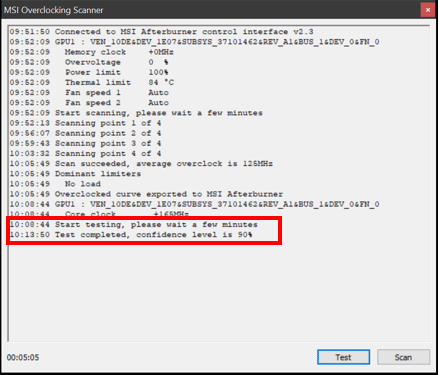
MSI Afterburner comes with a really neat and, more importantly, resource-efficient overlay display, which can help you quickly assess how you have affected the frame rate in video games.Īnother cool feature it can boast about is the ability to create different profiles for your settings. Related: The Best GPU Benchmarking Software For 2023Īs well as being able to modify and experiment with the key settings of your GPU, you can also monitor how these changes affect it in real time. These features make it a great tool, but the reason we point to it as the best is its simplicity and ease of use. The great thing about MSI Afterburner is that it allows you to slowly and carefully adjust the GPU’s core clock and tinker with the memory clock, fan speed, power limit, and core voltage. However, it truly shines in its overclocking and underclocking capabilities. For such a powerful and useful tool, it’s important to know the full extent of its capabilities, so you can use them to their fullest.Īs previously mentioned, MSI Afterburner is a great tool for monitoring and benchmarking. With all that said, I manually OC mine too.If you have previously heard of this piece of software, you likely have some idea of what it is and what it’s capable of. I'm trying to locate a good review I've read recently that show the results of a manual OC, and one done by the scanner, are veyr close in terms of performance and settings. I'd agree too that OC a GPU isn't too difficult, and can be done in 30 mins. I don't disagree with you necessarily, but the results with OC Scanner can be rewarding for someone who has no experience OC'ing. What OC Scanner does is to see how far the curve can be safely adjusted to provide higher clockspeeds. Out of the box the last few generations of graphics cards have used this curve. By doing this you will get a curve where higher voltages are required to run at higher clockspeeds. This curve works by matching the values of clockspeeds to corresponding values of voltage that can sustain those clockspeeds. It does this because the OC Scanner algorithm uses the so-called Voltage/Frequency Curve.


This process will repeat itself 4 times to cover 4 different Voltage levels. At that point, the last known stable clockspeed will be set as the maximum value. This process repeats itself until the GPU fails to maintain stability under load.

If the clockspeed is stable under load, the clockspeed will be upped by another step and the GPU will be stressed once more. The process consists out of the same basic steps as manual overclocking, being: increasing clockspeed by one step, then stressing the GPU to see if this clockspeed is stable. Within just a few minutes it will run a process that will determine the highest stable overclock settings for your graphics card. The OC Scanner is essentially a tool that uses an algorithm developed by NVIDIA for the RTX 20 series graphics cards.


 0 kommentar(er)
0 kommentar(er)
